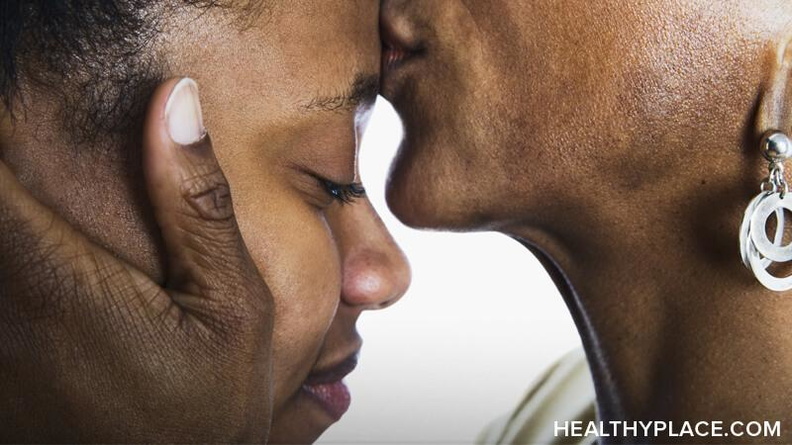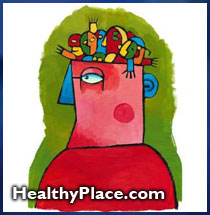We Get LoveNotes from readers. . . "Thank you. I was afraid and searching today. Your words in this article lifted my spirit and my awareness, and brought me back to center so that I could breathe deeply and view the present with clear perspective instead of through my veils of fear. I was in dire need of a reminder. Ahhhh ... thanks again." - Cathy
 I am willing to trust. I know that to the degree I am willing to give up my search for a healthy love relationship, I can have it. I know I can have whatever I am ready and willing to receive. Individual receptivity is everything. Without it, nothing changes. With it, all things are possible. I no longer insist upon my choice.
I am willing to trust. I know that to the degree I am willing to give up my search for a healthy love relationship, I can have it. I know I can have whatever I am ready and willing to receive. Individual receptivity is everything. Without it, nothing changes. With it, all things are possible. I no longer insist upon my choice.
I know that the only thing I lose when I let go of something I am afraid to live without is the fear itself. I am stronger than anything that frightens me!
I let go of the past, and I am free to think clearly and positively in the present. I am not my past.
Letting go is the natural release which always follows the realization that holding on is an energy drain and it hurts. Letting go happens effortlessly when there is no other choice. Letting go does not mean giving up.
- LoveNote. . . A life without love in it is like a heap of ashes upon a deserted hearth -- with the fire dead, the laughter stilled, and the light extinguished. - Frank P. Tebbetts
Letting go is a journey that never ends. Never. It only begins -- over and over again -- each time I can glimpse something higher than my own painful certainty over who I think I am. There is always something higher; a life beyond the limits of my present sight.
To see what is farther I must be willing to lift my eyes from their present point of focus. Release always follows revelation and real revelation is always a glimpse of something that was only just out of sight.
continue story below
I know that stress in my love relationship exists because I insist! What I resist, persists. I am tied to whatever I avoid.
- LoveNote. . . The heart loves, but moods have no loyalty. Moods should be heard but never danced to. - Hugh Prather
It is a mistaken belief that I must push my love relationship in the direction I choose that keeps me in a strained and unhappy relationship with it. Reality has its own effortless course, and I can either embrace its way or struggle endlessly with mine.
I do not need power to flow.
I let go of that part of myself that is certain it is better to suffer and feel like someone than it is to just let go and quietly be no one. I give birth to a new me that never has to hold on to anything because it is already everything.
I dare to walk away from all of the familiar but useless mental and emotional relationships that give me a temporary but unsatisfactory sense of self. My true identity is calling me and to hear it I must be willing to endure, for as long as necessary, the fear of self-uncertainty.
This form of seeming self-abandonment eventually turns into my greatest pleasure as it becomes increasingly evident that the only thing certain about fear is that it will always compromise me. When it comes to who I really am, there is no compromise.
Let go of the past. The past is yesterday. It is irretrievable. When you relate to the past, you relate to no one or any thing. You are literally talking to yourself. No one else is listening. You have already heard all you have to say about that, so, let go.
A Course in Miracles says, "You cannot really not let go what has already gone. It must be, therefore, that you are maintaining the illusion that it has not gone because you think it serves some purpose that you want fulfilled."
It is certifiable insanity to conjure up your own reality based on the past and relate to it, rather than to relate to the present which is the only reality.
- LoveNote. . . Relationships are part of a vast plan for our enlightenment, the Holy Spirit's blueprint by which each individual soul is led to greater awareness and expanded love. Relationships are the Holy Spirit's laboratories in which he brings together people who have the maximal opportunity for mutual growth. - Marianne Williamson
I say goodbye to the past and hello to the present.
I am enthusiastic about who I am becoming! I know that no one sincerely asks for a new life until they are thoroughly dissatisfied with the old one. I am and I let go. When I allow myself to let go of what is old, I stay true to what is new.
I believe that as with all insight, higher understanding itself contains not only the instructions I must follow, but the strength I will need to carry them out.
Starting life over again is the key to a new me. I see the beauty and significance of starting over - over and over and over. Every present moment is always new and new is always right now! The new dies to the ever-new in an endless celebration of Life.
This is it!
I live in the present. I never let the past dictate the direction of the present moment. I give my best to my endeavors.
What lies ahead for me can only be good.
True peace and harmony are a part of who I am.
I have come to the realization that what is possible for me to become only truly changes when I am willing to see what is impossible for me to continue being.
My true nature is already fully independent and flying freely. I have found my wings.
I let go and let God. And so it is.
Thank you, Father!
- LoveNote. . . He that loveth not knoweth not God; for God is Love. - I John 4:8
We Get LoveNotes from readers. . . "I just wanted to let you know that I asked God to show me the way today, and I found your "Affirmation For Letting Go." It is exactly what I need and I read it often in order to see and feel clearly in a time of stress. Thanks again!" - Christine D.
We Get LoveNotes from readers. . . "Thank you. I had to read it 4 times before I could read it without protest. It has a lot of meaning for me, my present "best friend" and my attempts at self-improvement. I really needed help letting go of my desires and needs without separation." - Paul
continue story below
next: Put the Toilet Seat DOWN!





 (3) Autohypnosis Symptoms (Manifest by High Hypnotizability)
(3) Autohypnosis Symptoms (Manifest by High Hypnotizability) I am willing to trust. I know that to the degree I am willing to give up my
I am willing to trust. I know that to the degree I am willing to give up my  When it comes to pain surrounding love, we're more likely referring to the "add-ons" of love. The love baggage, we might call it. For some reason, many people assume negative emotions are a part or element of love. But experientially we know this isn't true.
When it comes to pain surrounding love, we're more likely referring to the "add-ons" of love. The love baggage, we might call it. For some reason, many people assume negative emotions are a part or element of love. But experientially we know this isn't true.